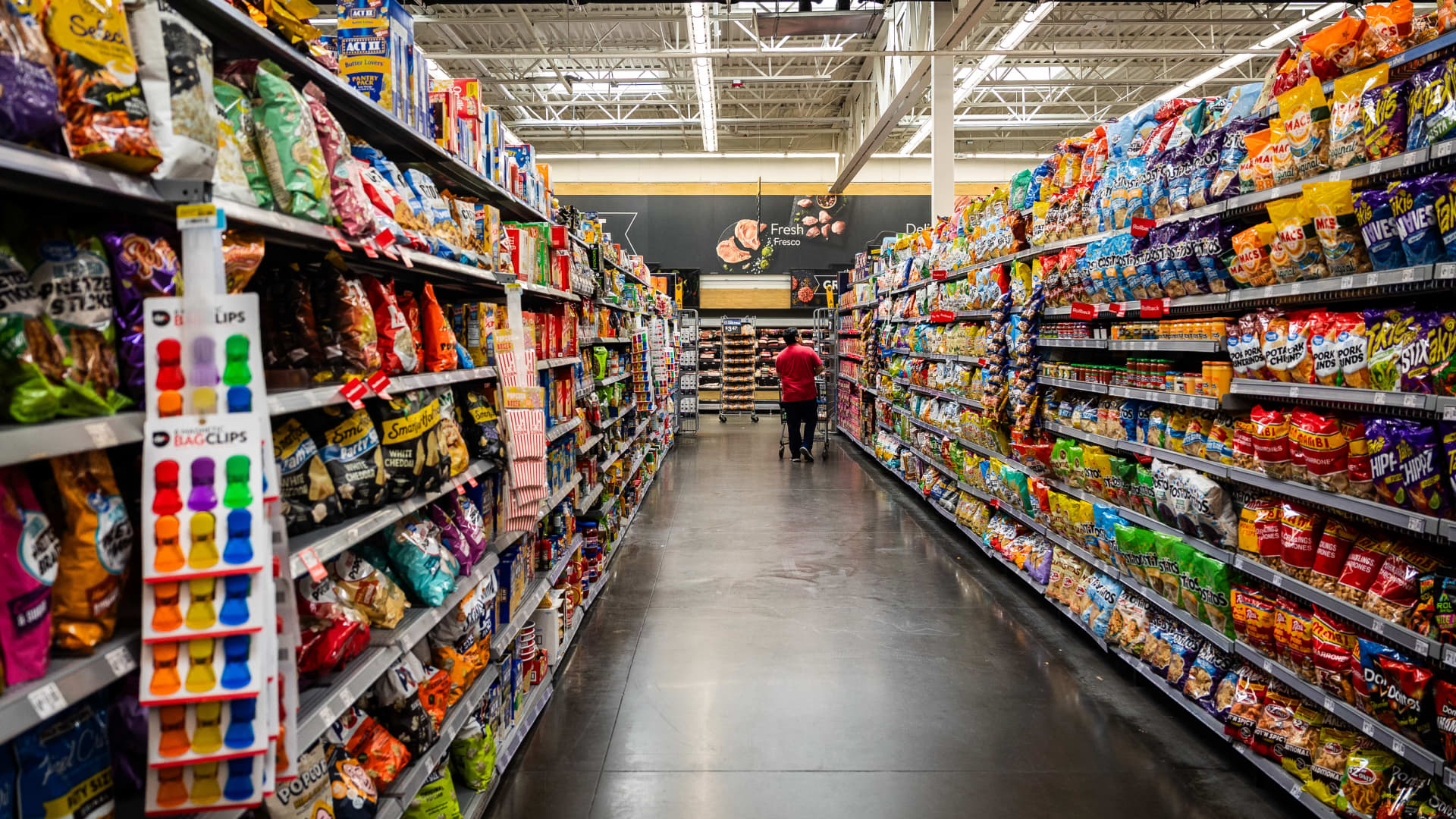On Monday, under new policy included in President Trump’s tax law, Supplemental Nutrition Assistance Program (SNAP) benefits that have provided low-income Americans with more purchasing power in the grocery store begin to go into effect. According to one estimate, it is “the largest cut to SNAP in history,” a federal program which in one form or another dates back to the New Deal era and currently provides basic food assistance to more than 40 million people.
Grocers large and small are bracing for the impact of changes to the SNAP program. A CBO analysis released this month estimates that 2.4 million fewer Americans, including families with children, are forecast to receive food stamps benefits in an average month. Other estimates show families across the U.S. could lose anywhere from $72 to $231 per month in support.
While low-income Americans will have more difficulty qualifying for the benefits, many experts predict that some of the largest grocers, despite having many SNAP recipients among their ranks of customers, may actually benefit.
According to consumer data company Numerator’s verified purchase data for SNAP users, Walmart leads in SNAP shopper spend with 24 percent, followed by Kroger (8%), Costco (6%), Amazon (5%), and Sam’s Club (4%).
“On the surface one would think less SNAP would be a negative, but the way these things have played out in the past and the way I think it will play out this time is that discount grocers that focus on value, these kinds of economic headwinds for lower-income customers end up being a positive,” said Michael Baker, analyst at D.A. Davidson & Co.
Baker cited Walmart as one of the retailers that will likely see a positive impact from the SNAP changes.
“Consumers have to find other ways to save money, they still need groceries. I can envision a little bit of a negative impact on the size of the purchase or units per transaction, but that tends to get offset by increased traffic,” Baker said.
He thinks customers spending SNAP dollars at Target or Costco are going to trade down to stretch their dollars. Other retailers, such as B.J. Wholesale, may benefit because it is positioning itself as a value-based destination for weekly club store grocery shopping, according to Baker.
Scott Moses, group head of grocery, restaurants and pharmacy group at Solomon Partners, also expects Walmart to come out a winner in the SNAP changes.
“As the world’s largest grocer – by a very wide margin – Walmart can use its scale and extremely low cost of debt to capitalize on SNAP cuts – as it has done with food inflation – offering better prices than its smaller peers can afford to match and strengthening its customer value proposition,” Moses said.
The biggest impact to grocers, according to Baker, will be felt around the edges, and it is at the level of independent stores that the most pain is expected. Independent grocery store operators are on edge.
Stephanie Johnson, group vice president of government relations at the National Grocers Association, which represents 20,000 independent and small chain grocery stores across the country, says that the changes will hit grocery stores in two waves.
Johnson says work requirements — for example, when adults do not report working 20-hours per week or complete paperwork to qualify for an exemption, they will only be eligible for SNAP benefits for three months every three years — are going into effect now as states implement changes.
“Those people will fall off immediately as states implement changes,” Johnson said, adding that these changes are about half the impact of the SNAP changes. “And the impact will be different depending on the neighborhood. There are a lot of unknowns,” she added.
NGA member make up one-third of the grocery industry and $250 billion in sales a year, but exposure to SNAP varies widely, with some grocers having less than 1 percent of their sales as SNAP while others push 70 percent.
“Our members have between a 1–2 percent net profit margin, that is a big change. Because of those margins, our members are not getting rich off of SNAP,” she said.
The trade group will be engaging with Congress, citing data such as the fact that SNAP makes up about 12 percent of grocery sales in the U.S., and 6 to 10 percent of those sales could be impacted by the loss of benefits, with ripple effects on jobs in the sector, but she said that it is unlikely any changes will be rolled back in the current Congress.
Katina Holliday, owner of Freshly’s Market in Aberdeen, Mississippi, opened the grocery as a way to combat a food desert. She is in the process of opening a second Freshly’s in another nearby community, which means the SNAP changes are coming at a bad time. “Our sales have totally decreased the past couple of months to the lowest I have seen,” Holliday said.
She says Freshly’s has seen a 35 to 45 percent decrease in business, forcing her to cut hours, consolidate management positions, and put a hiring freeze in place. “Walmart will benefit totally because they are able to get volume at a lower price. We don’t take in a large volume and we pay a higher price already,” Holliday added. “There isn’t loyalty like there used to be,” she added.
Walmart, and most major grocery store chains, declined to comment. But Pittsburgh-based Giant Eagle, which is the No. 1 grocery store in its market, with stores also in Columbus and Cleveland, Ohio, said it is working on limiting the impact to shoppers from the SNAP changes.
“As retailers look toward the next 12 to 24 months, there is a recognition that changes to the Supplemental Nutrition Assistance Program (SNAP) may impact grocery budgets for some families,” said a Giant Eagle spokesman. He noted that the benefit cuts come during a period of time when consumers are prioritizing value more than ever. Over the past 12 months, he noted, industry grocery prices have been influenced by compounding factors including recent and existing tariff implementation, fluctuations in transportation costs, and product availability challenges driven by a variety of factors.
In addition to weekly sales available in circulars, discounts in the Giant Eagle mobile app, and grocery and fuel rewards through a loyalty program, the spokesman said Giant Eagle will be working with suppliers to explore all opportunities to maintain and reduce costs. “We feel this is the best way we can help customers save on their groceries, regardless of the individual budget challenges they may be facing,” he said.
The cost to Americans will ultimately extend beyond grocery store dollars, according to Michael Goldberg, associate professor at the Weatherhead School of Management at Case Western Reserve University, who says there is a larger question underlying the SNAP reform debate that gets obscured — the trading down of nutritional value.
Goldberg says SNAP has served as a sort of partnership between the federal government and grocers that has provided those at the lower end of the income scale access to food they might not have otherwise been able to purchase.
“The dollar goes farther at Walmart than at the farmers market,” Goldberg said.
That means SNAP customers who once might have spent their benefits for costlier, but healthier, farmers market produce will now more likely find themselves picking through the aisles of Walmart. These societal costs, he says, are harder to calculate.
“We pay for this one way or another if people are not eating healthy,” Goldberg said.












